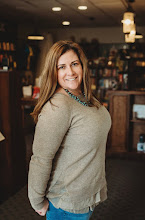I was
reading my friend Brian’s blog yesterday (found HERE) where he talks about
making a move. It is a move from a larger city to a smaller one and he relates
how many friends couldn’t see the logic behind it. He talks about how not all
places are the right fit for all of us – nor all books the right fit for all
readers. That analogy really resonated with me.
I’ve
shared before that I live in a tiny town – a town with a population of 5,000.
We do have two traffic lights, growing up we had zero. Apparently we’ve hit the
big time now. If I want a Starbucks, I need to drive through 20+ miles of
cornfields to get one. Ditto for going to a mall, bookstore, or most
restaurants. That being said, this is the perfect spot for me.
I didn’t
always live here – in fact, my parents encouraged me to leave as soon as
possible. They pushed me to go away to college, but I promptly returned. When I
graduated and got married, we moved away. Jobs took us north – to the suburbs
of Chicago, just about as opposite a spot as you can imagine.
For two years we lived up there, and part of me enjoyed it. I loved the options, the nearness to the city, the people. But part of my heart knew I wasn’t at home. Deep down I was certain of one thing, I would be returning to the small town I loved. This place was simply temporary.
For two years we lived up there, and part of me enjoyed it. I loved the options, the nearness to the city, the people. But part of my heart knew I wasn’t at home. Deep down I was certain of one thing, I would be returning to the small town I loved. This place was simply temporary.
There are
friends of mine who think I am crazy. They love the feel of the city. Small
towns like mine make them feel claustrophobic. The fact that everyone knows you
– and knows your story – makes them want to run for the hills. I get it.
What this
boils down to is the idea that not one spot is right for every person. Some
want to live where it’s warm, some want to experience the seasons. Some need to
live surrounded by people, and some would prefer quiet. What does this look
like in our classrooms?
Brian
mentioned that his move made him think of his readers – and that not all books
work for every reader. I completely agree. I can think of many times that I
have read a book recommended to me and just thought it was ok. Last year I
recommended a book to my friends Tony and Franki – who often share similar
preferences with me in regard to what we read. They both disliked my
recommendation. I was surprised, at first, but then realized that this happens
all of the time. Depending on your background, mood, and preferences – the
books you love might not be the books I love.
Thinking
more about this, I thought about my classroom. Kids can choose how to respond
to what they read, where they want to sit, if they need to have a quiet
conversation in reading or writing time, or if they need silence. I have kids
that stand to work, kids that sit on their knees. Kids that choose to lay on
their stomachs on the floor to write, and kids who must be at a table.
When I
look at my room as I set it up in August, I often am reminded of the hours I
will spend here during a given school year. I want a place that I will be
comfortable in. For the past few years I have also looked at it from my
students’ point of view – is it a place they will be comfortable? Just as I am
now aware of the type of spot I feel best living in, I want my students to
learn the type of conditions they need in place to learn in - what is their comfort zone? Choice is embedded
in everything we do in our classroom – what we read and write, how we respond,
and what type of space we need in order to learn. We are all so different and I
am grateful to Brian’s post for reminding me of that.















